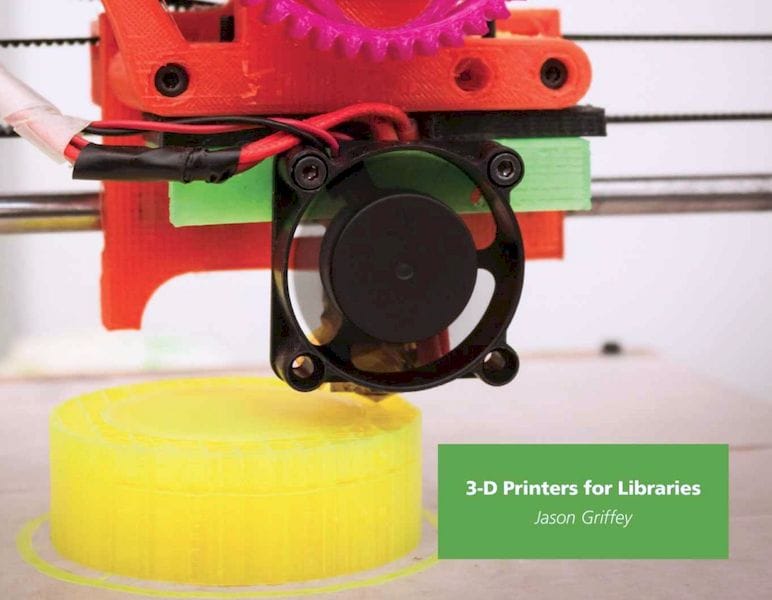
This week’s selection is the useful “3D Printers for Libraries” by author Jason Griffey.
This is an interesting topic that should get more coverage, as many libraries around the world are contemplating – or even deploying – makerspace-like equipment within their facilities for the public to use.
While libraries have decades – or even centuries – of experience managing printed books, they often have little experience deploying or managing making equipment. Essentially it is as if they had suddenly changed mandate to become a workshop instead of a library. It’s that different.
As someone who’s been deeply involved in running makerspaces, I know of the tremendous challenges encountered when setting up and operating a maker space. Those same challenges would face the librarians as they deploy their workshop.
In my experience, the key challenges include a tendency to “break” the machines because people don’t often know what they’re doing. There’s also an element of carelessness as the users are not the owners of the equipment.
The key problem is that “the public” typically do not have significant – or any – training on operation of complex manufacturing equipment. Thus libraries are constrained to make use of only machines that offer extreme ease of use and very low risk of safety incidents. In practicality, this often means desktop 3D printers are typically chosen as one of the key making machines for library makerspaces.
This book, published by the American Library Association in their Library Technology Reports series, focuses on precisely these challenges.
While the book details 3D printing processes, materials and a limited selection of equipment, there is a section dedicated to “Library-Specific Issues”, and “The Case for 3D Printing in Libraries” that will be of particular interest.
Like most printed books, the selection of equipment will be out of date and that’s not unexpected, as the equipment changes so frequently these days it is almost impossible to keep up online, let alone on paper!
Sections also talk about the need for 3D design software, which will obviously be required for anyone using a 3D printer in a library. In some cases, a library may wish to supply 3D design tools to the public as part of their program. However, in other cases, a library may opt for a “BYO3D” approach.
There is a small section on 3D scanning, which is a related discipline that a library may also wish to deploy to allow users to create 3D models from real life objects. However, that comes with an entirely different set of challenges.
If you are working at or with a library that’s considering launching a makerspace function, this book might be of great interest.
Via Amazon

